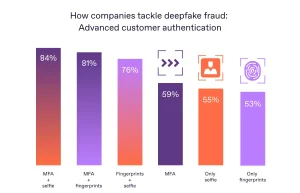The Future of Foldable Mobile Devices and Their Impact on User Experience

Foldable phones aren’t just a gimmick anymore. They’re evolving—fast. From clunky first attempts to sleek, multi-functional gadgets, these devices are reshaping how we interact with technology. But what’s next? And more importantly, how will they change the way we use our phones every day?
From Novelty to Necessity: The Evolution of Foldables
Remember when foldable phones felt like fragile prototypes? Early models had visible creases, questionable durability, and sky-high price tags. Fast forward to today, and the tech has matured—almost like a teenager finally growing into their limbs. Screens are more resilient, hinges are smoother, and software is catching up.
Here’s the deal: foldables are no longer just about bending a screen. They’re about redefining functionality. Imagine switching from a compact phone to a mini-tablet in one fluid motion. That’s the promise—and it’s getting closer to reality.
How Foldables Are Changing User Experience
1. Multitasking Made Effortless
Ever tried juggling apps on a tiny screen? It’s like playing Tetris with your thumbs. Foldables, though? They turn cramped workflows into spacious playgrounds. With larger unfolded displays, you can:
- Run two apps side by side without squinting
- Drag and drop content between windows (yes, like a desktop)
- Watch a video while taking notes—no more frantic switching
It’s not just about more screen space. It’s about smarter screen space.
2. The Death of the Tablet?
Why carry a phone and a tablet when one device can do both? Foldables blur the line between portability and productivity. For travelers, students, or anyone who craves versatility, this is a game-changer. Tablets might not vanish overnight, but their appeal is shrinking—literally.
3. New Ways to Interact
Foldables introduce gestures and interactions we’ve never seen before. Half-folded, your phone could become a laptop-style touchpad. Or prop it up like a tent for hands-free video calls. The hardware’s flexibility sparks software innovation—developers are just scratching the surface.
The Roadblocks Ahead
Sure, foldables are exciting. But they’re not perfect—yet. Here’s what’s still holding them back:
| Challenge | Why It Matters |
| Durability | Folding screens still feel delicate compared to traditional glass |
| Price | Most foldables cost as much as a used car (okay, maybe a scooter) |
| Software Gaps | Not all apps adapt well to shifting screen sizes |
| Battery Life | Larger screens demand more power—will efficiency keep up? |
These aren’t dealbreakers, though. They’re just bumps on the road to mainstream adoption.
What’s Next? Predictions for the Next 5 Years
Let’s get speculative. Based on current trends, here’s where foldables might head:
- Rollables, not just foldables: Screens that roll out like parchment—already in development.
- Price drops: As tech scales, expect prices to fall by 30-40% by 2026.
- Ecosystem lock-in: Brands will push foldables as hubs for watches, earbuds, and smart home gear.
- Niche designs: Maybe a folding phone with an e-ink back? Or a tri-fold beast for power users.
The wildcard? How quickly developers embrace the form factor. If apps and services optimize for foldables, adoption could skyrocket.
The Big Picture: A Shift in How We Think About Phones
Foldables aren’t just new devices—they’re a new philosophy. For decades, phones got smaller, then bigger, then… well, stuck. Foldables break that cycle. They suggest that the future isn’t about choosing between compact or large, but having both in one package.
Honestly, it’s refreshing. In a world of incremental upgrades, foldables feel like a leap—not just in tech, but in how we imagine our digital lives.
So, will your next phone fold? Maybe not tomorrow. But soon? Don’t bet against it.






